Saunders Recorders
Bristol UK.
Unusual Blocks
Sometimes the windway floor is a separate piece of wood that has been set into a groove machined the length of the block. This is sometimes a feature of large recorders and Kobliczek recorders of all sizes. (Not illustrated.)
Moeck Two Part Block
This is a two piece block from an old Moeck 'Rottenburgh' treble.
The two parts are glued together with the grain at 90° to each other. A standard single piece block has the grain running the same way as in the inner part of this composite block.
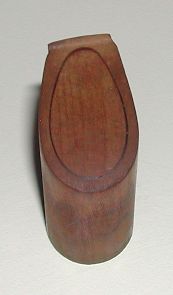
Here is a view of the lower end.
This form of block was not made for very long. There are, as far as I am aware, no historical precedents. I don't think there are any advantages. It must have added significantly to manufacturing costs.
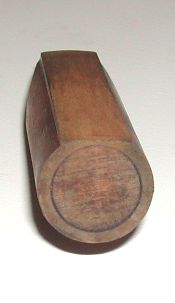
Moeck Porous Block
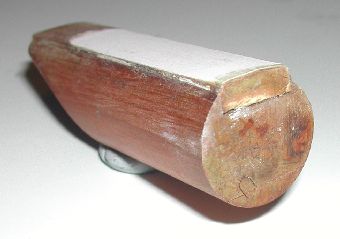
This is another form of block that did not last for very long. It absorbs moisture and was supposed to stop condensation problems. However, the white material is prone to disintegration. A conventional new block will breathe new life into recorder fitted with one of these. (Only ever seen in a treble model.)
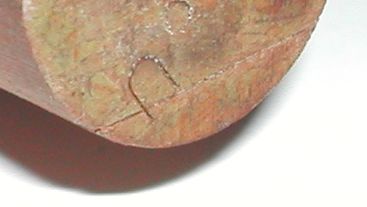
You can just see where this block has been split and wedged to raise the surface that forms the windway floor or correct a loose fitting block. It is a standard technique that saves the trouble of producing a completly new block.
Blocks with Lips.
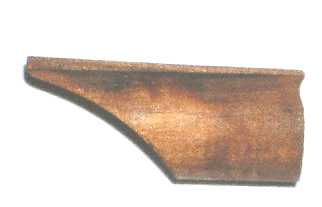
On a standard block the lower end is cut square and flat apart from the upper chamfer which is usually cut at an angle of 45°.
Here is a block with an undercut to produce something like a lip. I found it in an old Arnold Dolmetsch treble but I have no idea if the undercut was produced in the workshop or by somebody experimenting afterwards. The recorder played well and was otherwise unremarkable.
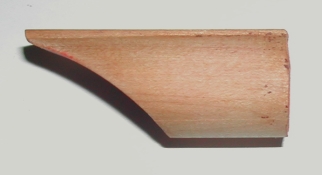
Here is another block, with a tiny undercut, comparable in size to the lower chamfer. This comes from a Kung 3c palisander descant made in 1960. I have no doubt that it is an original feature. (The lip is very small and difficult see, let alone photograph.)
Block with a Slot.
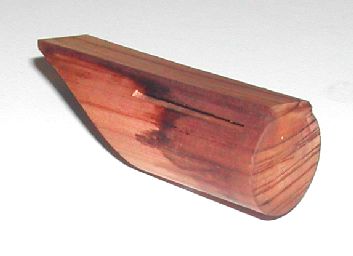
Here is a Kung treble block dating from 1993. It has a slot right through the block, under the windway floor. This block is also unusual in that it has been made with the grain markings more or less parallel to the windway floor.